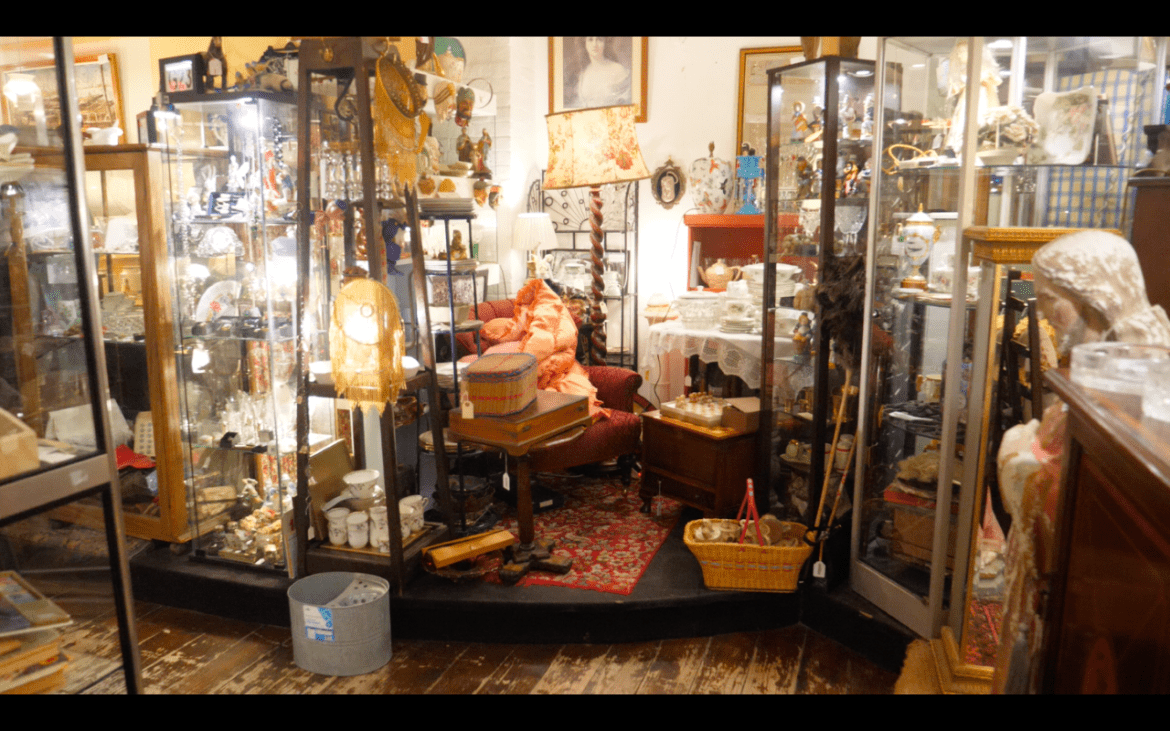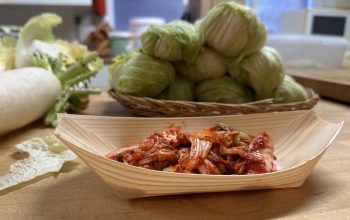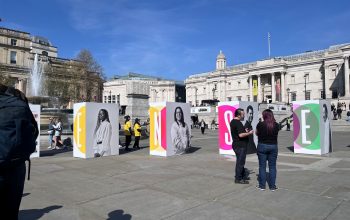On London Road in Kingston, just off the hustle and bustle of the market, there is a vintage shop called Antiques. It looks bijou from the outside, but it is like a Tardis inside with a vast three-storey emporium of vintage items. Since 1996, it has been “selling the past” with more than 80,000 stallholders and around 10,000 antiques – from jewellery and collectables to furniture.
Dressed in a Japanese silk kimono and wearing a bulky gold chain, one of the stallholders of Antiques’ clothes section, Leslie Claridge said: “I’ve always been interested in vintage clothes. My family was very modern, so I rebelled against them.
“Being from the 60s, they always fancied minimalist stuff, and I adored old objects, history and was curious about other people’s lives. So for me, vintage clothes embody another life, that you can bring back and make a fresh story from the past archives.”
When she moved to Kingston ten years ago, Claridge was lured to work in this “department store of history” by its collection of odds and ends, where she could find her own niche.
“Working here gives me sometimes the missing link with the past. With so much hassle about the future, it’s so vital to step back,” Claridge said.
“My manager says that the shop is also haunted by a headless lady. I’ve never seen her personally, but I do feel this place has some benign spirits.”
Vintage has increased in popularity
The shop boasts a motley range of customers. Claridge said that the shop is a stomping ground for university students from the creative writing department who snap up the typewriters from the collectables section to impart an authentic feel to their work. Photography students, she said, seek inspiration for vintage collages and nostalgia-tinged photo sessions for their portfolios. Antiques is also a boon for drama students scouring out for props for their performances.
The popularity of vintage fashion has soared in the last decade. A recent report from second-hand clothes sales platform ThredUp suggested the total resale market is expected to more than double in value from £18b to £39b by 2023, amounting to 10 per cent of the retail market.
According to ethical fashion journalist editor Bell Jacobs, the vintage fashion for Generation Z not only emphasises the “new sense of individuality” but also helps to “save the planet”. There is a longing for kicking against the “hegemony of trends”.
This backlash against fast-fashion is spurred on by the realisation of the inferior quality of fast-fashion.
Reverting to durable, vintage clothes is an attempt to transcend time. Claridge said vintage clothes should not be dismissed, as “moth-eaten frocks”.
“Because of its superior quality, our vintage clothes tend to outlast modern disposables from Topshop and other clothes giants. Vintage is tailored for high-street haute couture fashion,” she said.
She said that women who choose the generic frocks, churned out by global merchandisers, risk bumping into someone wearing the exact same dress at the party. “The clothes I sell, however, is your individual signature,” Claridge said.






